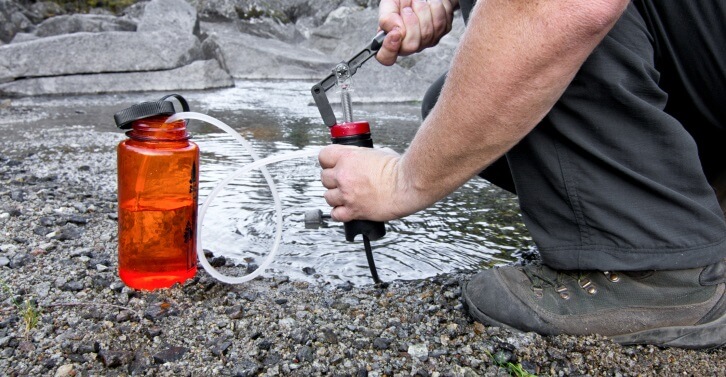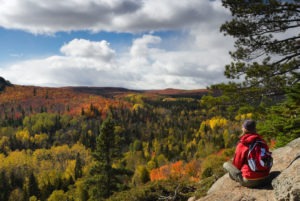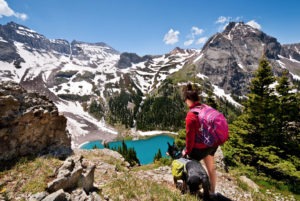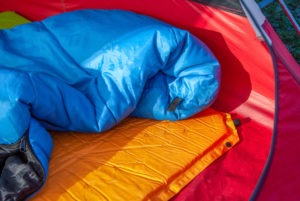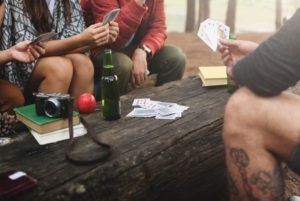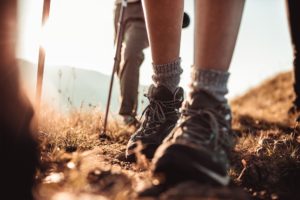
Safe Drinking Water
Water is heavy to carry in your pack, especially if you’re planning a multi-day trek in the wilderness. Knowledge is key. Is it a heavily travelled trail? Are there campsites nearby? Have you seen hikers with dogs? Are there farms nearby? There are still many pristine places on our planet, especially at higher elevations, with safe, pure, clean drinking water. However, there is always a slight possibility that water could contain water born pathogens that cause human illness. Let’s dig a little deeper to learn more about safe drinking water in the wilderness…
Contamination Possibility
The most common culprit for unsafe drinking water in the wild is the contamination from animal life – including you and your friends! In fact, a common source of harmful bacteria is your own hands! Make sure you wash them thoroughly with biodegradable soap before bringing a cool, clear sip to your mouth.
If you are anywhere near farmland or other cultivated areas, watch for algae. If you see the slightest sign of green blooms, avoid drinking the water. While you may feel safe, far from the pollutions of civilization, fertilizer can find it’s way to the backcountry via domestic animals, rain, run-off and wind. It causes growths in the water that can be very harmful to humans. Also, a concentration of livestock can pose a risk for obvious reasons. Such water should always be treated.
Viruses, protozoa, and bacteria can take a few days or even up to a week to start causing symptoms. Simply sipping and seeing how you feel is no way to judge water drinkablility. If you find yourself suffering from diarrhea, intestinal pain, vomiting, or other signs of infection, chances are likely that contaminated water has found it’s way into your system. Prevention is key!
 How to Purify Water in the Wilderness
How to Purify Water in the Wilderness
Know your surroundings. If you’re at a high elevation with very little human and domestic animal traffic, the water is likely clean and safe to drink without any treatment. If you have any doubts, treat it with one of the following methods:
- Filter – Filters are a convenient and reliable method of treating water in the backcountry. It consists of a pump and filter material, weighs very little and has gained immense popularity over the past decade.
- Iodine – Iodine tablets or an iodine solution is far less expensive than a hiking specific water filter. It’s easy to use, extremely packable and takes only about 20 minutes to make the water safe to drink. However, any chemical treatment can give the water an unpleasant taste. It’s common to add a powdered flavored drink mix to iodine treated water.
- Boiling Water – Boiling water for at least one minute (five minutes at higher elevations) destroys Giardia, the most common bacteria found in unsafe drinking water. Boil it before you rest at night, so it cools down for the next day.
Do Your Part in Keeping Water Clean
We’re all in this together, so it’s important to practice good habits in the wild to preserve and protect our wilderness. Urinating, defecating, cooking and bathing should be taken at least 200 feet away from water sources on flat ground. Also avoid these activities on a slope that leads to a stream or water source. A little common courtesy will soon become habit. Your fellow backcountry-goers will appreciate your awareness and will do the same for you!
Final Decision: Is Water Safe to Drink the Backcountry?
It’s pretty simple. While the risks in isolated areas at high elevation are small, it is best to plan on some sort of purification as back up. Invest in a backpacking water filter, bring some iodine tablets or boil suspect water. Don’t let a few quick gulps keep you from going back out there and doing the things you love to do!
Check out our camping supplies if you’re looking for tents, sleeping bags, tarps, etc.
